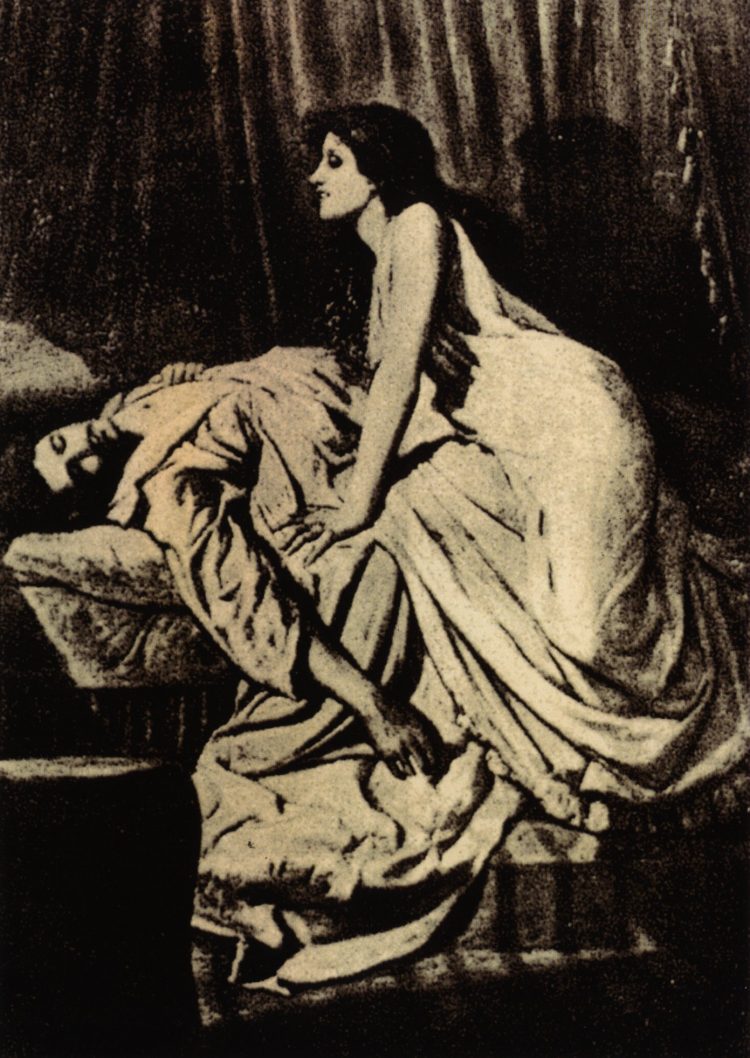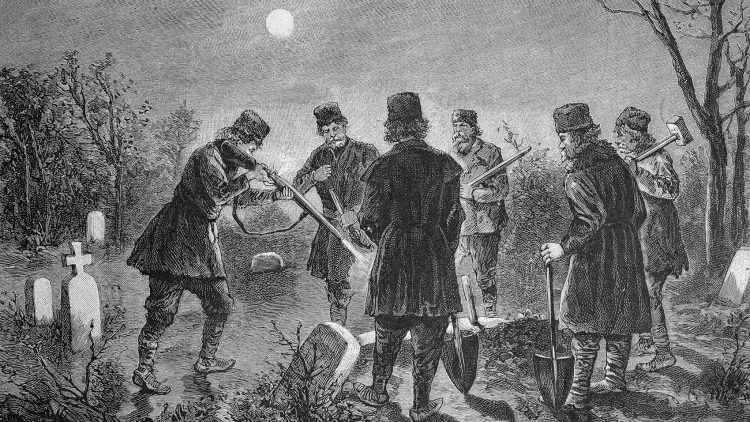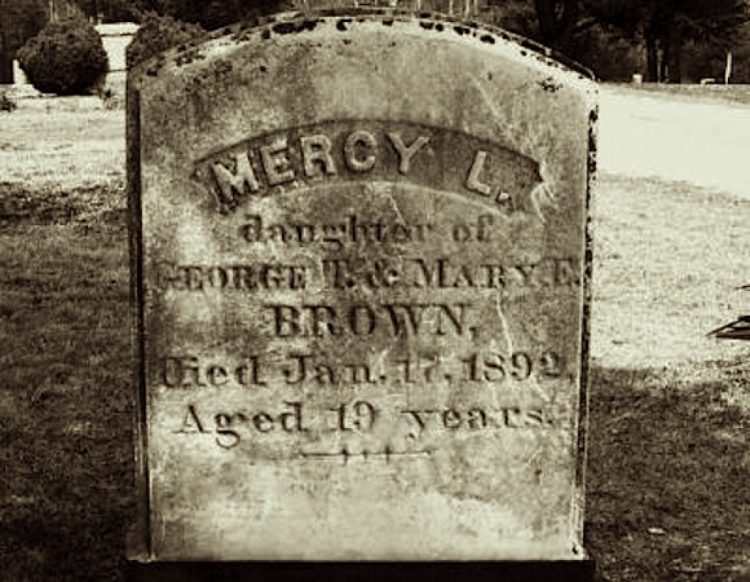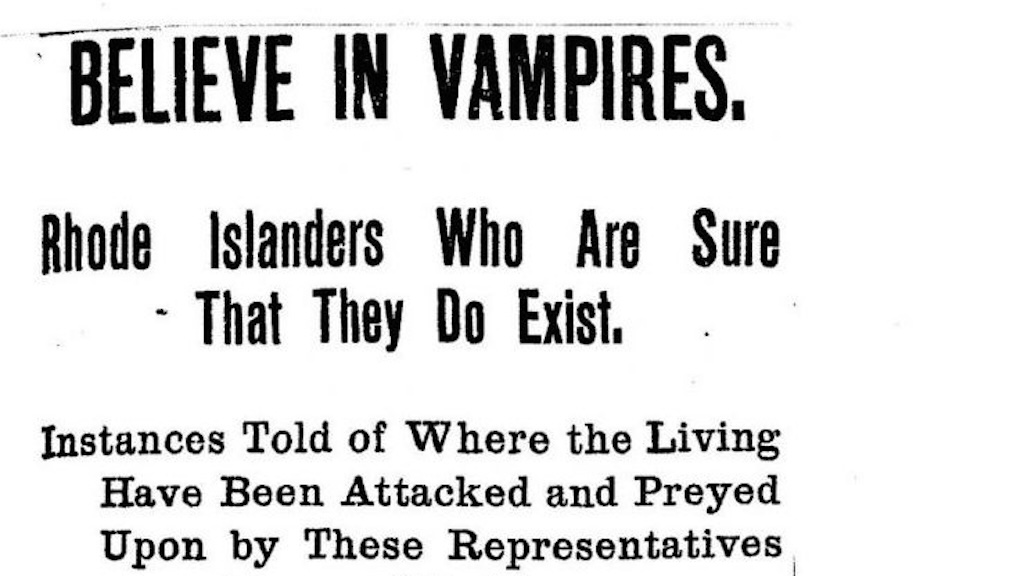Mass hysteria, moral panic, witch hunts…it’s a hell of a thing. Certainly, the multiple documented instances of panic and hysteria have displayed a clear picture of our species’ total aversion towards that which extends beyond the realm of immediate knowledge, or understanding.
We all know about the Salem witch trials, and I have already discussed the European werewolf trials in a previous article. If anything is to be gathered from these events in history, one thing ought to be noted:
Time and time again, we’ve seen that terror begets hostility. With that hostility, comes barbarity. We fear that which is not understood, and we are prone to despise that which we fear.
Henry David Thoreau once wrote, “The savage in man is never quite eradicated.” Coincidentally enough, Thoreau had written that statement as a direct response to the very same topic of this article; yet another prime illustration of what happens when the mind drifts aimlessly into superstition, and almost invariably, panics.
In 1892, all throughout Vermont, Rhode Island, and the eastern regions of Connecticut, a terrible outbreak of tuberculosis had ravaged its way through the states. This was during a time in which tuberculosis was unanimously and rightfully feared as the incurable leading cause of death in the United States, with the vast majority of those infected succumbing to the disease. Because the bacterial origin of the disease was completely unknown in those times, the people residing within these regions of New England had begun to believe in a far more nefarious, occult origin.
That nefarious origin was, of course, vampirism.

In their minds, tuberculosis (or consumption) was believed to come from those who had returned from the dead and had drained the life of their surviving relatives and loved ones. As folklore would dictate, the most surefire way of ending this undead plague was through exhumation and burning, although many people took it a few steps further through decapitating the long-dead corpses, and inhaling the smoke and ash of their burning bodies.
One of the first notable and factual cases of vampire panic was in the case of Fredrick Ransom, a young man from a village in 1817 Vermont. Coming from a marginally more high-class family and scholastic background (where disease was generally seen as less of a likelihood), Fredrick had died at the untimely age of 20 from this particularly relentless spread of tuberculosis. Shortly after his passing, Fredrick’s father had become increasingly perturbed and haunted by the notion of his family falling victim to his son, who was almost-assuredly coming back from the dead to feed on them. Consequently, Fredrick’s father had his body exhumed from his grave, his heart cut out of his chest, and then promptly incinerated on a blacksmith’s forge.
As fate would supposedly have it, the Ransom family nevertheless suffered the loss of many a family member after this “ritual”, due to the disease.
Annie Dennett of New Hampshire was another noteworthy victim of paranoid, post-mortem ritualism. After her untimely death from tuberculosis, Annie’s father had also been struck by the infection. Fearing that her undead arrival was imminent, she too was exhumed from her grave in the hopes of ending the evil that had plagued the Ransom family. However, by the time she had been fully exhumed, they found that her remains had been reduced to little else but a small pile of bones – effectively thwarting the Dennett family’s plans.
Soon after, Annie’s father had also succumbed to the infection.

At this point, one would most likely come to the conclusion that… maybe this presumed strain of unholy vampire consumption is not exactly the issue here. Perhaps there is another, more effective method of remediation, somewhere out there…right? Well, unfortunately, we almost forgot to take a look at a particular incident that occurred in Rhode Island, called the Mercy Brown incident.
The Mercy Brown incident refers to a chain of events that occurred in the small town of Exeter, Rhode Island. Several members of a family – known as the Brown family – fell ill from the tuberculosis infection that swept the state. The matriarch of the family, Mary, was the first to pass on. The oldest child of the family, Mary Olive, followed shortly thereafter.
Eventually, all excluding the father George and the son Edwin had died from contracting the infection. As per usual, many were quick to believe that the family had been stricken with a particularly vicious strain of folkloric vampirism, and that death was soon to be tapping on the shoulders of George and Edwin.
Through the urging of credulous village-folk, George had permitted the exhumation of his fallen family members. It was this decision that subsequently prompted one Henry David Thoreau to write on the matter, and on the savagery of man – so often rooted in this kind of superstition and panic.
While the remains of Mary and Mary Olive were found to be normal, by standards of decay, it was the corpse of Mercy that solidified the superstition of the village-folk…
Because she had been interred in an above-ground burial (that very much resembled a freezer in its structure and facets), Mercy’s corpse was, by all accounts, still very much intact; her heart still contained blood, and her physical features were still mostly discernible. Of course, the people involved were already set on their notions of impending terror, and promptly took Mercy’s corpse to perform their rituals in one of the most ludicrous displays of hysteria one could imagine…
After Mercy’s heart had been smoldered to ashes, the remnants of her heart were blended with water and given to the young Edwin (who had now contracted the disease) to drink. Supposedly, this was the village’s harebrained attempt at curing the infection that took hold of him. Nevertheless, their attempt was fruitless, and he died soon after. Mercy’s remains were then buried at a nearby Baptist church.

Suffice to say, we have come a long way in terms of critical thinking. But much like the Salem witch trials and the European werewolf trials that came before it, one would be wise to look at the New England vampire hysteria with a cautionary eye. There is much to be understood in the idea that we must be hyperaware, and entirely cognizant of our own pasts. Much like the old motto states, “Those who fail to learn history are often condemned to repeat it.”
Now, does that mean we’ll inevitably end up blaming the next epidemic on vampires? Not exactly. But the power of rationality, critical thinking, and open-mindedness is undying, and that should never become lost on us.






